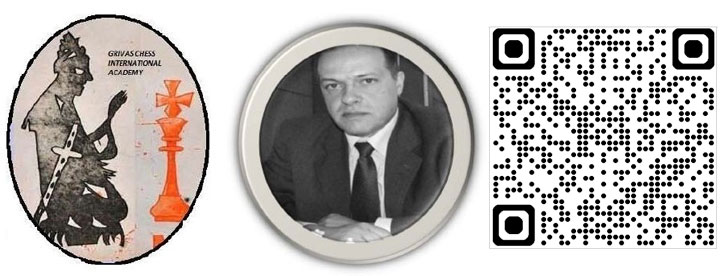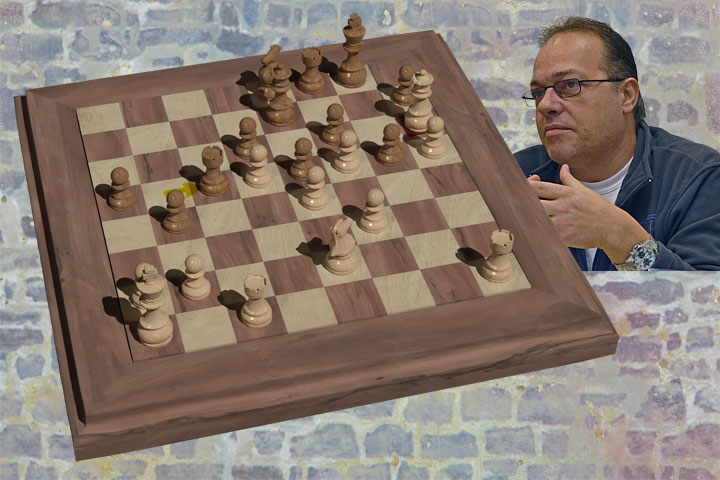One of the first chess players, who started to think this way and who presented and explained the concept of chess prophylaxis to the world, was the famous Aron Nimzowitsch. He used to say: ‘Neither attack, nor defence, is the essence of positional play, but prophylaxis’.
The knowledge about preventive play is wide. Many famous trainers and chess writers were and are still researching this field. Preventive play has numerous shapes and numerous technical approaches.
It can be roughly divided into three major fields (A. Mikhalchishin):
- Elementary prevention.
- Foreseeing and preventing tactical threats.
- Foreseeing and preventing strategic threats.
The first two are strongly connected and easier to understand. This time we will stop at so-called strategic preventive play.
Strategic Prevention
There is no doubt that strategic prevention is the hardest among all. Many great chess players from the past and present mastered this element. Let us mention just A. Nimzowitsch, T. Petrosian and A. Karpov, who wrote whole chapters on this theme and inspired whole generations of chess players.
There are many motifs known and here are the most important ones:
- Restricting the activity of opponent’s pieces.
- Strengthening good squares for our own pieces.
- Preventing unfavourable exchanges, or on the contrary making favourable exchanges.
- Play for strong squares.
- Prevention of weakening a pawn structure.
- Battle against moves, which would free the opponent.
- Preventing the opponent from gaining too much space.
- Prevention of opponent’s pawn mobility in the centre or on a flank.
- Blockade of opponent’s pawn structure.
- Making opponent’s development difficult.
- Placement of inaccessible position, etc.
As a conclusion, we can be assured that preventive play is one of the most important parts of strategic play. There is no quick way of learning it. It requires a lot of practical play and studying of many examples. The knowledge about it is not and can never be final, therefore I recommend chess players of all categories and titles, including grandmasters, to study it.
Here are some games to help you on the way:
 Grivas Chess International Academy
Grivas Chess International Academy
Free Educational Editions
Download for free – Please Like & Share!
Use the above-right QR-Scan or click the link below
The Grünfeld Defence is not only Black’s sharpest response to 1.d4, but also an opening with rich and deep theory. Nowadays, many players follow Magnus Carlsen’s approach and treat the opening in a simple way. Anti- grünfeld lines with Bd2 were known as the Smyslov Variation for 50 years. But he avoided direct e2-e4 lines, which are very popular today. The central struggle is very different after Black chooses his plan. In general, Black has three responses:
a. Capture on c3 and after c5 or e5 White gets a passed central pawn.
b. Allow White to create a strong centre after Bg7, then try to attack it with pieces or pawn redirection f7-f5.
c. Direct attack on the d4-pawn with Nd5-b6, which is a less logical solution.
In summary, our product offers a challenging and exciting experience that has hopefully piqued your interest. You should now grab a pen and something to drink and prepare for the lesson. Whether you’re a seasoned pro or a curious beginner, our product will provide you with one hour of engaging and rewarding entertainment. Don’t miss out on this opportunity to take on a new challenge and discover what you are truly capable of.
A Greek Warrior – Theodorou (40 pages): A portrait of the No1 Greek player!
FIDE World Championship 2024 (103 pages): The last FIDE WC, fully presented!
Fischer vs Greece 1968 (40 pages): The famous Clock-Simul of the great Bobby!
Greece vs Polgar Scheveningen 1990 (84 pages): A relatively unknown event, presented 35 years after!
Greece vs Greats (56 pages): Classical Matches of Greeks vs. Greats
The Grandmaster Program (248 pages): A classical book on creating GMs!
The Art of War (130 Pages): The famous 2400-year-old book of Sun Tzu, connected to Chess!
Newsletter 01 – January 2025 (48 pages): The monthly edition of the Grivas CIA.
Newsletter 02 – February 2025 (74 pages): The monthly edition of the Grivas CIA.
Newsletter 03 – March 2025 (74 pages): The monthly edition of the Grivas CIA.
Newsletter 04 – March-2 2025 (70 pages): The extra monthly edition of the Grivas CIA.
Newsletter 05 – April 2025 (80 pages): The extra monthly edition of the Grivas CIA.
Newsletter 06 – May 2025 (84 pages): The extra monthly edition of the Grivas CIA.
Newsletter 07 – June 2025 (68 pages): The monthly edition of the Grivas CIA.
Newsletter 08 – July 2025 (76 pages): The monthly edition of the Grivas CIA.
All games are included in the separate PGN file you can find in the folders!
The folder will be renewed every month, with new material/editions, specially prepared by the
Grivas Chess International Academy
An Official World Federation (FIDE) Academy since 2012
